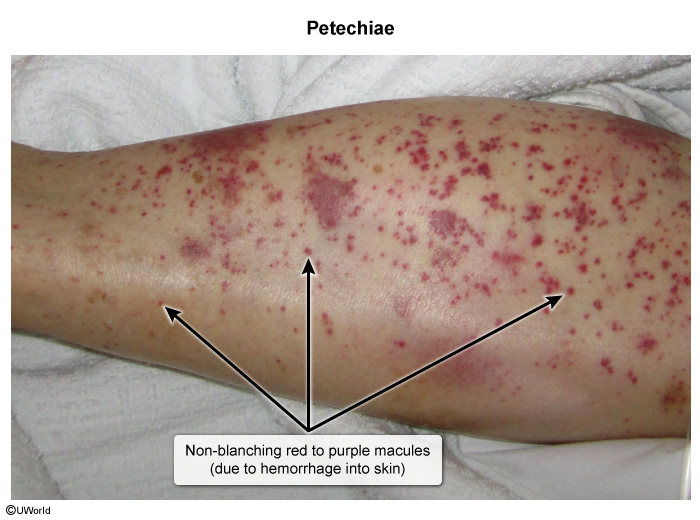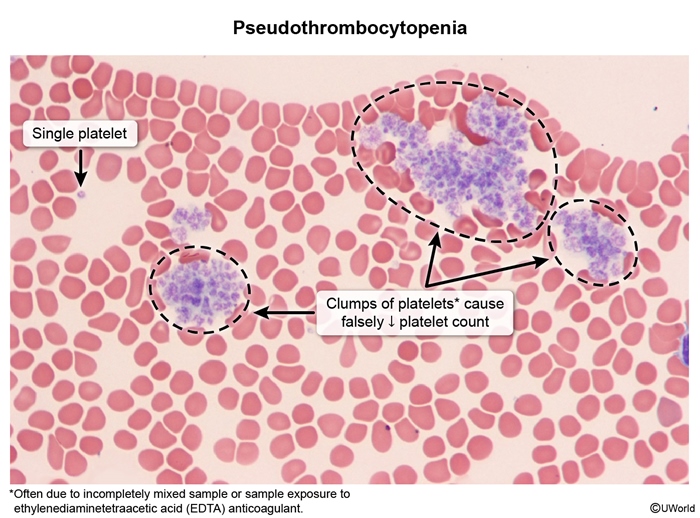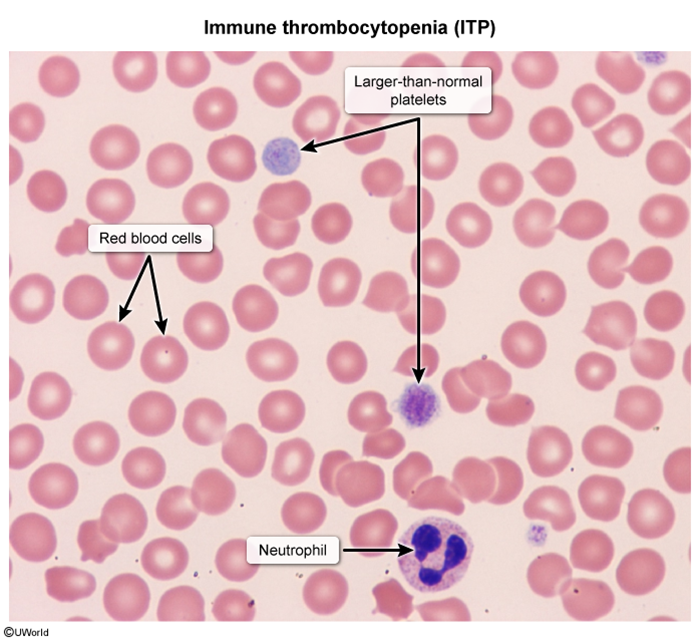Immune Thrombocytopenia (ITP)
Article Sections
Introduction
Immune thrombocytopenia (ITP) is an acquired autoimmune disorder characterized by isolated thrombocytopenia due to antibodies directed against platelet antigens. Patients present with signs of disordered primary hemostasis (eg, cutaneous/mucosal bleeding).
Pathophysiology and risk factors
The pathophysiology of ITP involves autoantibodies that target platelet surface glycoproteins (eg, GPIIb/IIIa). Antibody-coated platelets are recognized and removed from circulation by splenic macrophages. In addition, antibodies may target bone marrow megakaryocytes, disrupting platelet production.
The exact trigger for autoantibody formation is unclear but may involve molecular mimicry following an inciting event (eg, infection) in which antibodies cross-react with normal platelet antigens. Disrupted immune regulation in autoimmune disorders and lymphoid malignancies may also predispose to the formation of autoantibodies.
Therefore, risk factors include:
- Infection: Epstein-Barr virus (EBV), cytomegalovirus,
Continue Learning with UWorld
Get the full Immune Thrombocytopenia (ITP) article plus rich visuals, real-world cases, and in-depth insights from medical experts, all available through the UWorld Medical Library.
Figures
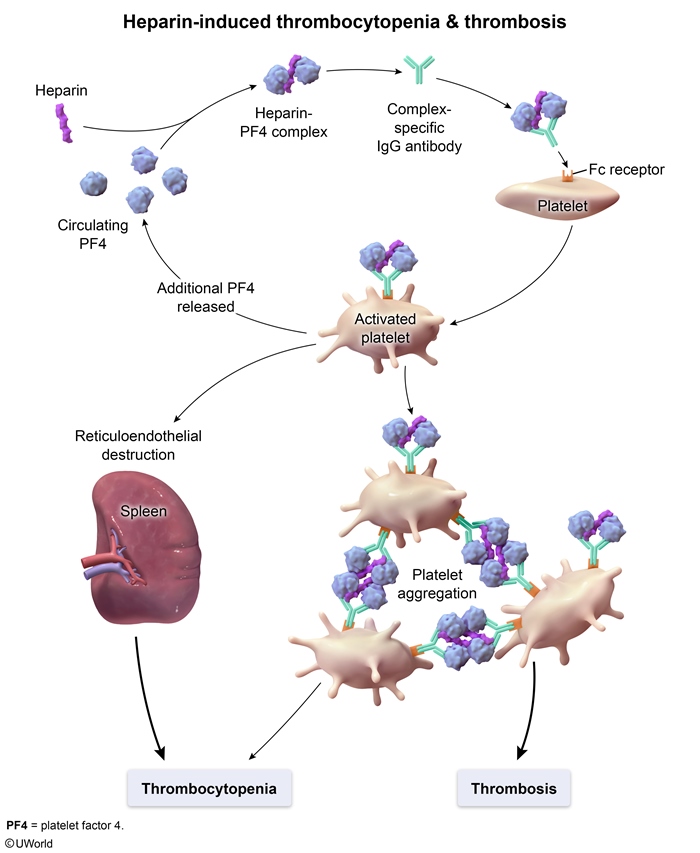
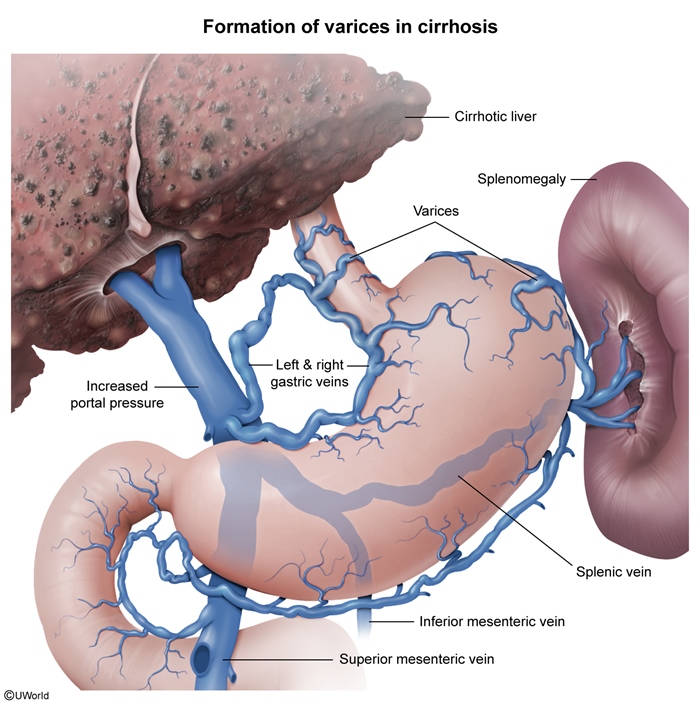
Images
